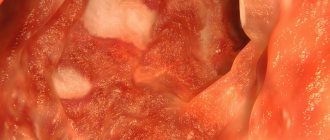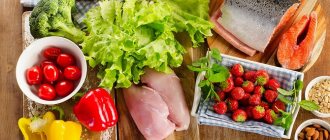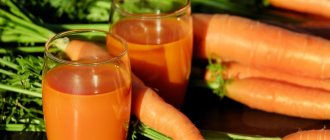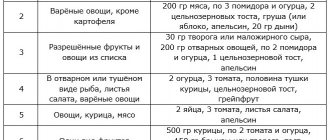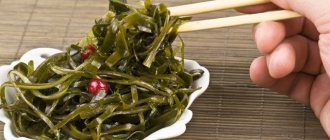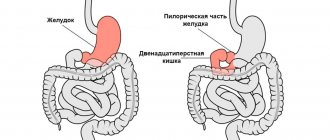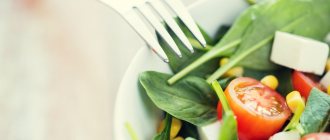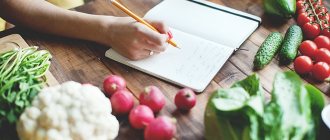- About the disease
- Cost of services
- Sign up
- About the disease
- Prices
- Sign up
Gout is a severe systemic disease that progresses without treatment, leading to severe complications, disability or death. Gout is characterized by elevated levels of uric acid in the blood. As a result, deposits of monosodium urate crystals form in the soft tissues, in and around the joints with the formation of tophi (gouty nodes).
Treatment of gout is complex:
- drug therapy
- mandatory adherence to diet therapy.
The diet is based on eliminating alcohol, limiting foods containing animal protein, eliminating sugary carbonated drinks, fatty, fried and smoked foods. The diet should be balanced with plant and dairy products.
Pros of the diet
Uric acid is formed when purines are broken down. Purine bases are found in food, so when treating gout, the patient’s diet and adherence to diet therapy are important. Diet therapy allows you to eliminate foods that contain purines and reduce uric acid levels. While following the diet, the number of pain attacks decreases, the inflammatory process decreases, and swelling of the joints and soft tissues decreases. The diet is balanced with high-calorie foods and does not cause severe hunger. With the help of diet, the risk of complications and the formation of tophi is reduced.
Basic rules of the hypopurine diet
All important information has been stated above. Also, patients who create a low-purine diet on their own should know that the amount of protein consumed in the daily diet should be reduced to approximately 100 g. Less is possible, but not more. Meanwhile, protein is an important element for the construction of new cells. Therefore, it is also impossible to limit it too much.
Only low-fat foods should be included in the diet. If there is obesity, the menu is designed in such a way that the amount of carbohydrates received is as low as possible. The diet is based on low-calorie foods, which will help you gradually lose excess weight. You may need the help of a nutritionist.
You need to drink more regular water - at least 1500 ml per day. If you have diseases of the cardiovascular system, you need to discuss the norm with your doctor. Limit salt intake to approximately 10 g per day.
Product table
| Product type | Products |
| Bakery products | Black, white bread, rice, buckwheat, rye bread, baked goods made from yeast-free dough. |
| Meat fish | No more than 3 times a week (150 g serving). Rabbit, turkey, chicken, low-fat fish, seafood - mussels, squid. |
| Dairy | Milk, kefir no more than 2% fat, cheese up to 45% fat, yogurt without additives, sour cream up to 15% fat, butter 82% fat. |
| Sweets | Protein desserts – meringues. Jelly, marmalade, marshmallows, classic marshmallows without additives, homemade jam, jam. |
| Cereals | Buckwheat, rice, millet, millet, quinoa, bulgur, couscous. Exclude legumes - corn. |
| Eggs | Chicken, quail - no more than 2 pieces per day. |
| Oils | Vegetables – olive, nut, flaxseed, rosehip, coconut. Creamy organic, 82% fat. |
| Fruits, berries | All dried fruits are allowed except raisins. Citrus fruits: oranges, lemons, tangerines, pomelo. Apricots, strawberries, raspberries, pears. |
| Vegetables | Potatoes, carrots, cucumbers, tomatoes, zucchini, eggplant, beets, dill, onions, garlic, white cabbage, pumpkin, squash. |
| Nuts, seeds | All nuts are allowed except peanuts. Peanuts can be affected by mold. |
| Beverages | Green tea, herbal, with turmeric, you can add lemon to tea. Juices from permitted vegetables and fruits, homemade fruit drinks, homemade kvass, alkaline mineral water. |
general characteristics
The goal of the “6 table” diet is to normalize purine metabolism, reduce the formation of uric acid and its salts in the body, and shift the urine reaction to the alkaline side.
General characteristics:
exclusion of foods containing a lot of purines and oxalic acid; moderate restriction of sodium chloride, increasing the amount of alkalizing products and free fluid (in the absence of contraindications from the cardiovascular system). A slight decrease in protein and fat in the diet, and with concomitant obesity - carbohydrates. Culinary processing is normal, excluding the mandatory boiling of meat, poultry and fish. The food temperature is normal.
Chemical composition and calorie content:
- proteins - 70-80 g (50% animals),
- fats - 80-90 g (30% vegetable),
- carbohydrates - 400 g (80 g sugar),
- calories - 2700-2800 kcal,
- sodium chloride - 10 g,
- free liquid - 1.5-2 liters or more.
Diet:
Drink 4-6 times a day, in between and on an empty stomach.
If gout is combined with obesity, the “8 table” diet is prescribed using fasting days.
Menu for the week
Monday
- Breakfast - an omelette cooked in the oven or steamed, you can add 50 ml of milk + a couple of slices of bread, 150 g of vegetable salad.
- Lunch – minestrone soup (vegetable), 130 g of low-fat fish, steamed or boiled.
- Dinner – sautéed vegetables with zucchini and eggplants 300 g, a slice of bread.
Tuesday
- Breakfast – bulgur or oatmeal porridge with fruit or dried fruit.
- Lunch – pilaf of wild rice and chicken fillet without frying.
- Dinner – vegetable sauté with potatoes and low-fat cheese, baked in the oven, a slice of bread.
Wednesday
- Breakfast - yogurt with fruits and nuts.
- Lunch – cream soup of pumpkin, zucchini and potatoes, chickpea cutlets, you can add 2 teaspoons of pumpkin or flax seeds to the soup.
- Dinner – stewed cabbage with tomatoes, onions and turkey.
Thursday
- Breakfast – bulgur or rice porridge, can be boiled in water or water + milk, berries or dried fruits.
- Lunch – bean lobio, vegetable salad.
- Dinner – bulgur or wild rice pilaf with chicken breast and vegetables.
Friday
- Breakfast - cottage cheese or cheesecakes baked in the oven, fruit, 1 teaspoon of sesame seeds, 1 tablespoon of sour cream.
- Lunch – durum wheat pasta with seafood, vegetable sauce.
- Dinner – buckwheat with fish baked in the oven.
Saturday
- Breakfast – wheat porridge with a mixture of water and milk, dried fruits.
- Lunch – cream soup of vegetables, add flax seeds or pumpkin seeds, a piece of bread or crispbread.
- Dinner – vegetable sauté, seafood, boiled egg.
Sunday
- Breakfast - yogurt with fruits and nuts.
- Lunch – perlotto with vegetables and cheese.
- Dinner – stewed cabbage with vegetables and turkey meatballs.
Hypopurine diet option No. 2
It is proposed to create a weekly diet yourself from the dishes listed below.
For breakfast:
- pumpkin raisin pancakes;
- carrot casserole with fruit;
- carrot curd;
- buckwheat porridge;
- weak teas and coffee;
- millet porridge with apples;
- toast with butter or cheese.
For lunch:
- potato and carrot bits;
- vegetable stew;
- cabbage soup with rye crackers;
- braised cabbage;
- beef cutlets;
- rice porrige;
- carrot or zucchini soup;
- potato and cabbage salad;
- tomato and grant juice;
- potato and fish pie;
- milk noodle soup.
For dinner:
- vegetable cabbage rolls;
- corn porridge with yogurt;
- salad with egg, carrots and croutons;
- oatmeal with applesauce;
- lingonberry broth, yogurt, milk or jelly;
- beet salad;
- pasta casserole;
- pancakes with strawberries;
- peppers stuffed with rice;
- pumpkin pudding;
- a fresh vegetable salad.
For a snack:
- curd soufflé;
- blueberry-apricot jelly;
- blackberry and banana smoothie;
- cereal with milk;
- blueberry yogurt pie;
- fruit salad;
- cereal yogurt;
- melon;
- peach with curdled milk;
- strawberries and cream;
- carrot juice.
It is important not to forget that portions should be small.
Therapeutic diet for this pathology
The therapeutic diet is aimed at reducing the consumption of protein products of animal origin. The allowed amount is up to 1 g per 1 kg of body weight. It is imperative to maintain water balance, the amount of liquid you drink is up to 2 liters per day. As a liquid, you can use rosehip decoction, fruit juice, water with lemon, or alkaline mineral water. Alkaline water prevents the occurrence of nephrolithiasis. Salt consumption is limited, because it retains fluid in the body and disrupts lymphatic drainage. Diet therapy for gout is aimed at eliminating foods that are rich in purines.
Products that should be excluded:
- rich meat and fish broths;
- yeast baked goods;
- legumes;
- fatty fish, sprats, sardines, pike;
- offal;
- lard, lard;
- porcini mushrooms, champignons;
- sweets – cakes, pastries, sweets, chocolate;
- greens - spinach, sorrel, rhubarb;
- vegetables – asparagus, cauliflower, radish, radish;
- fruits – figs;
- cereals – white peeled rice;
- sausages, smoked meats;
- yeast products.
It is recommended to consume meat boiled, because... purine bases remain in the broth.
It is necessary to exclude or limit the consumption of coffee, strong tea, spices, smoked foods, fatty foods, and alcohol.
Hypopurine diet option No. 3
This is the treatment table No. 6 proposed by Pevzner. The diet is bland, the menu is quite varied. Another option:
- Breakfast: vinaigrette with sour cream, a slice of bread with butter, cottage cheese, tea.
- Snack: scrambled eggs, buckwheat, juice.
- Lunch: soup with vegetables with sour cream, meat fried in croutons, fried potatoes with sauerkraut.
- Snack: compote.
- Dinner: vegetable cutlets, pasta casserole, jelly.
- Snack: a bun with a glass of milk.
Creating a menu will not be difficult even for a person far from medicine and nutrition. The main thing is to remember the list of foods that you can eat and purine-containing foods that are prohibited.
Recipes for the sick
The diet contains a large number of products from which you can prepare various dishes according to the season.
You need to diversify your diet with new dishes. Whole grain buns
Ingredients for 4-5 pieces: 100 g oat bran, 100 g whole grain flour, 200 ml kefir, 1 teaspoon olive oil, 1 teaspoon baking powder, salt, herbs (to taste).
Recipe:
- 1. Mix oat bran with kefir and let stand for 15-20 minutes.
- 2. Mix flour with baking powder.
- 3. Mix with bran, add flour gradually and mix.
- 4. Knead the dough, it should be elastic and soft.
- 5. Add oil, salt, herbs. Knead again.
- 6. Form buns and place in the oven for 30 minutes at 180 degrees. If you bake buns on parchment, then grease the parchment with butter.
Oat cookies
Ingredients: oatmeal – 200 g, unsweetened yogurt – 300 g, apples – 2 pcs., dried fruits – 50 g, cinnamon to taste.
Recipe:
- 1. Pour yogurt over oatmeal and stir. Leave to swell for a short time (20 minutes).
- 2. Grate the apple without peel on a coarse grater, chop the dried fruits with a knife.
- 3. Mix apple, dried fruits, cinnamon, cereal.
- 4. Form cookies into small balls and place on baking parchment. Bake at 180 degrees for 40 minutes.
How to plan a diet correctly?
The diet is based on the list of products presented above. A low-purine diet must be balanced so that the body receives all the substances necessary for its proper functioning. If it’s difficult to create a menu on your own, you can seek help from a doctor or find ready-made options. But in general, there is nothing complicated in this issue if you know which products are prohibited and which are allowed.
You can include dishes prepared according to the following recipes in your diet:
- Carrot salad. Grate the vegetable, boil the egg and chop. Mix the ingredients, add croutons and season the salad with low-fat sour cream.
- Milk vermicelli soup. Boil 1 liter of milk in a saucepan. Break vermicelli into small pieces. Place in milk and cook for 15 minutes until tender.
- Fruit and berry salad. You should definitely include it in your low-purine diet menu. Peel the apple and pear, then cut into pieces. Turn kiwi into puree. Mix all products together, season with yogurt or sour cream. You can add a few slices of strawberries.
The hypopurine diet gives the first positive results after a short period of time, if you follow all the recommendations and follow the agreed rules. After about a week, the patient's condition improves significantly, and the symptoms soften. This has a positive effect not only on a person’s physical condition and general well-being, but also has a beneficial effect on the emotional sphere.
Below are several diet options for gout and high uric acid. They are examples of how to create your own diet. You can also use these options for your daily meals.
What to drink for gout
Mineral water for gout helps reduce the acidity of urine (alkalinization) and prevent the formation of urate stones. You should not drink sweet carbonated water. Mineral water can be consumed once a week, but if possible, store-bought sugary drinks should be avoided.
Article Sponsor
To relieve an acute gouty attack, a new generation nonsteroidal anti-inflammatory drug, a highly selective COX-2 (cyclooxygenase 2) inhibitor, etoricoxib, may be recommended. Etoricoxib (Etorelex) in therapeutic concentrations blocks the formation of prostaglandins and has anti-inflammatory, analgesic and antipyretic effects. Selective inhibition of COX-2 is accompanied by a decrease in the severity of clinical symptoms associated with the inflammatory process in diseases of the musculoskeletal system. The drug has contraindications for use. It is necessary to read the instructions for its use, and also consult with a specialist.
To prepare healthy and tasty teas you will need:
- lingonberry leaves;
- currant leaves;
- dried rosehip (rosehip decoction relieves inflammation).
Green tea is not advisable. Under no circumstances should you drink vodka and especially beer.
Hypouricemic diet one hundred. Why is this diet needed for gout?
Excluding foods rich in purines from your diet allows you to:
- dramatically reduce their intake and breakdown in the body;
- reduce the content of intermediate decomposition products (sodium urates).
As a result, the deposition of salts in tissues stops. If a patient with gout constantly adheres to the basic rules of a healthy diet (diet No. 6), the formation of salts will dissolve over time and may disappear completely.
Why follow a diet for gout:
- To speed up recovery during acute periods. In this case, experts recommend strict adherence to dietary rules, taking into account prohibited and permitted foods.
- To prevent exacerbation, the formation of gouty tophi (salt deposits) and kidney stones. During the asymptomatic period of gout, it is enough to adhere to the general rules of diet. Preference is given to vegetable vegetarian dishes, the amount of meat and animal fats is reduced to a minimum. There may be some minor deviations. Menu dishes and their variations can be used as a basis for a healthy diet.
Gouty tophi on the finger
The full menu of table 6, or the Pevzner diet - a list of dishes that can be prepared from permitted products. During an exacerbation of gout and throughout the rest of your life, a weekly menu is necessary to make your diet varied and healthy.
This means that the rice vegetable soup recommended for lunch on Wednesday can be replaced with vegetable stew. The main thing is not to exceed the recommended daily intake of proteins, fats and carbohydrates for gout.
Nutrition for acute gout
Exacerbation of gout is accompanied by a number of unpleasant symptoms:
One of the signs of an exacerbation of gout is attacks of acute arthritis. Such attacks develop suddenly. Two to three days before the attack, chills, low-grade fever, dyspeptic disorders, and general irritability may appear. During an attack, the metatarsophalangeal joint of the first toe is most often affected. Pain appears and quickly increases, the joint swells, the skin over it turns red, and the temperature in the joint area rises. The pain intensifies from any touch, even from touching the sore joint to the blanket. After a few days, the symptoms of arthritis gradually subside, mobility is restored and the patient feels practically healthy until the next attack.
During the period of exacerbation of the disease, you need to switch to an almost vegetarian diet. It is necessary to completely exclude all meat and fish from the diet. You can eat liquid milk porridges, vegetable soups, fruits and berries. Maintain drinking regime. You need to drink about 1.5 liters of water per day. You can drink alkaline mineral water.
